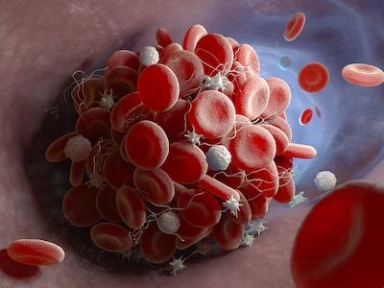Utility of Pregnancy - Adapted Years Algorithm in Diagnosis of Pulmonary Embolism
Findings from a multicentre prospective Artemis study.

Key Takeaway
-
A pregnancy-adapted years algorithm could safely rule out acute pulmonary embolism (PE) across all trimesters of pregnancy, the effectiveness being highest during the first trimester.
-
Computed Tomographic pulmonary angiography (CTPA) scans could be avoided in several patients.
Why This Matters
-
Acute PE during pregnancy remains a leading cause of maternal mortality in Western countries.
-
Because of low specificity and sensitivity of D-dimer test, all pregnant women are advised to undergo CTPA and ventilation–perfusion scanning which exposes both mother and foetus to radiation.
-
The years algorithm to diagnose PE has worked well in the general population with suspected PE and reduced use of CTPA.
-
A pregnancy-adapted years algorithm could thus be a valuable tool to detect suspected PE and provide radiation free diagnosis.
Study Design
-
The Artemis study was an international multicentre prospective study.
-
Pregnant women with suspected PE (n=498) were assessed using a modified years algorithm: D-dimer levels plus 3 criteria from the original years algorithm (signs of deep vein thrombosis [DVT], haemoptysis, and PE).
-
PE was ruled out if none of the 3 criteria were fulfilled + D-dimer level <1000 ng/mL or ≥1 criterion were fulfilled + D-dimer level <500 ng/mL.
-
Adaptations of the algorithm included compression ultrasonography for symptomatic DVT; positive results were not followed by CTPA.
-
-
Primary outcome was 3-month cumulative incidence of symptomatic venous thromboembolism (VTE) among subgroup of patients in whom PE had been ruled out.
-
Funding: Leiden University Medical Center and 17 participating hospitals.
Key Results
-
PE was initially ruled out in 96% of patients at baseline as per the pregnancy-adapted years algorithm.
-
Among these, 0.21% (1 patient) received a diagnosis of proximal DVT and none received a diagnosis of PE during follow-up.
-
-
On worst-case scenario analysis of patients lost to follow-up, 0.42% (95% CI, 0.11-1.5%) would have had VTE during follow-up.
-
CTPA was ruled out and thus avoided in 39% patients (95% CI, 35-44%).
-
Algorithm was most effective during the first trimester and least effective during the third trimester:
-
CTPA was avoided in 65% (95% CI, 54–75%), 46% (95% CI, 39–53%) and 32% (95% CI, 26–38%) of patients in the first, second and the third trimester, respectively.
-
One patient in the second trimester while none of the patients in first and third trimester were diagnosed with VTE at follow-up.
-
Limitations
-
Non-randomised study design.
-
Algorithm applied only in patients with a clear suspicion of PE, and not as primary screening test in patients with nonspecific chest symptoms.
-
Emphasis was largely placed on PE criterion although the other 2 criteria, DVT and haemoptysis were present in a sizeable fraction.
- Van der Pol LM, Tromeur C, Bistervels IM, Ni Ainle F, van Bemmel T, Bertoletti L, Couturaud F, van Dooren YPA, Elias A, Faber LM, Hofstee HMA, van der Hulle T, Kruip MJHA, Maignan M, Mairuhu ATA, Middeldorp S, Nijkeuter M, Roy PM, Sanchez O, Schmidt J, Ten Wolde M, Klok FA, Huisman MV; Artemis Study Investigators. Pregnancy-Adapted Years Algorithm for Diagnosis of Suspected Pulmonary Embolism. N Engl J Med. 2019;380(12):1139-1149. doi: 10.1056/NEJMoa1813865. PMID: 30893534


